If you’re looking for a stunning show of color that will add beauty to your outdoor garden, then orchids are an excellent choice! These amazing flowers come in many bright hues and offer impressive petal shapes that can really make a statement. But is it possible to plant these tropical beauties outside—in places like balconies, decks, or patios? We answer this question (and more!) in this blog post as we explore the specifics of growing orchids outdoors. Not only will we give insight into where you should locate them depending upon temperature and light needs but also share tips on how best to care for them so they thrive! So don’t hesitate any longer – dive into all that the amazingness of outdoor-grown orchid plants has to offer right here, right now.
Orchids
Orchids, known for their delicate beauty and complexity, belong to the largest family of blooming flowers with over 25,000 species and over 100,000 varieties. They are not just exotic, but also diverse in terms of shape, size, and habitat. While they’re often found in the tropics, orchids also thrive in the harshest of environments from deserts to Arctic tundra. The world of orchids is filled with a striking array of colors, intricate patterns, and rich fragrances, making it a captivating realm to explore. Let’s delve into the fascinating art of growing these beauties outdoors!
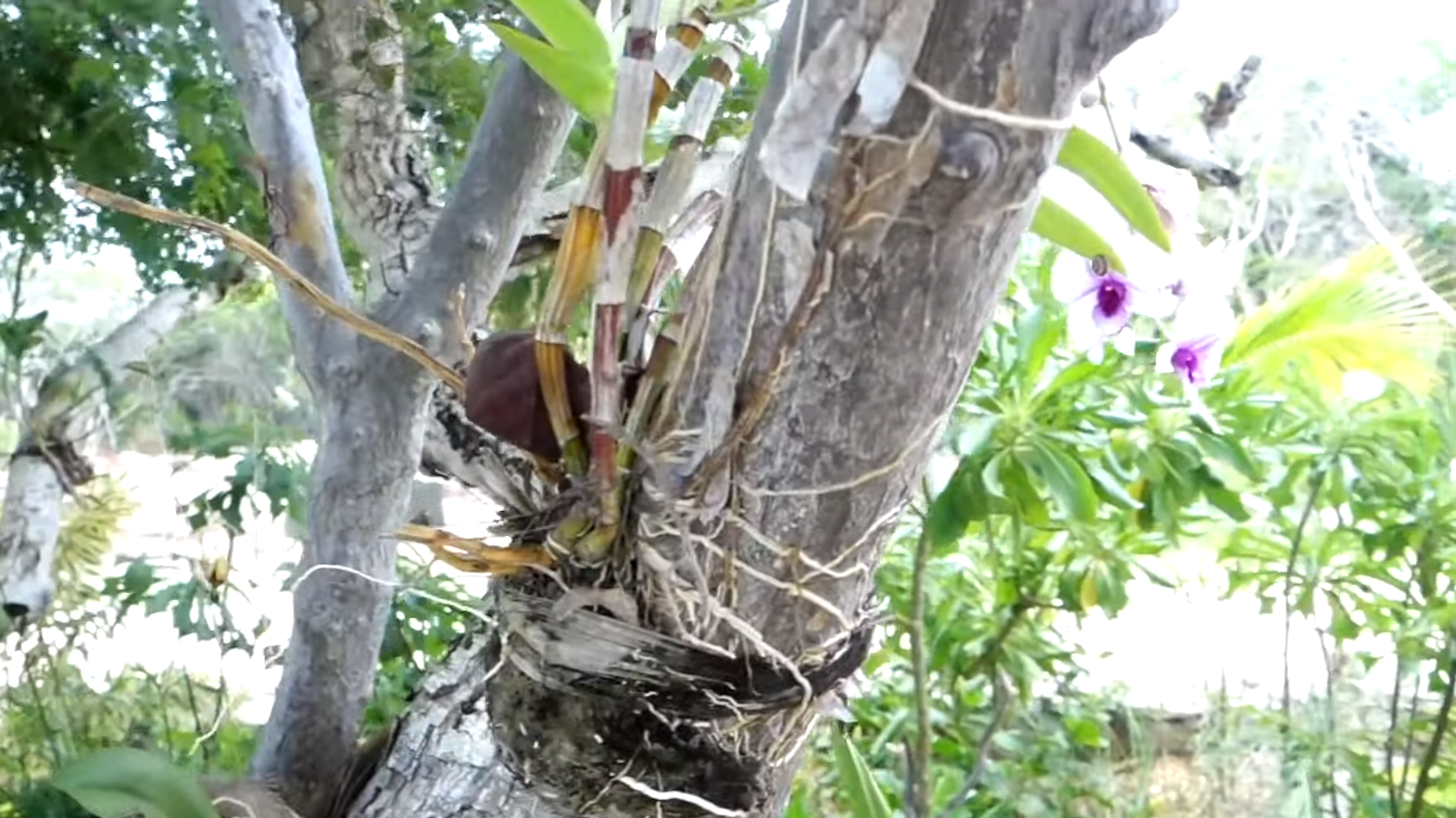
Characteristics & Types
Orchids display a range of unique characteristics that distinguish them from other plant families. The most prominent feature is their bilateral symmetry, where the flower can be split in the middle to produce two mirror images. Orchid blooms also possess a specialized reproductive structure, a column that combines both male stamens and female pistils.
In terms of types, orchids can be broadly classified into three categories: Epiphytic, Terrestrial, and Lithophytic. Epiphytic orchids, the most common types, grow on trees or other plants. They utilize their host only for support, gathering nutrients from rain, air, and debris around them. Terrestrial orchids grow on the ground and have roots under the soil. Lastly, Lithophytic orchids grow on or against rocks. [1] Each of these types requires different care and environments, contributing to the diverse and fascinating world of orchid cultivation.
Popularity of Orchids as outdoor decoration
Orchids have grown in popularity as an outdoor decorations due in part to their stunning aesthetic appeal, versatility, and the delightful challenge they present to gardening enthusiasts. They bring a sense of exotic elegance and refined beauty to any outdoor area, whether it’s a small balcony overlooking the city, a cozy patio, or a sprawling garden. Their vibrant colors, intricate patterns, and distinctive shapes make them a captivating addition, capable of transforming spaces into lush, tropical paradises.
Additionally, the ability of orchids to adapt to a wide range of climates makes them a popular choice for gardeners worldwide, with the possibility for successful cultivation extending far beyond the tropics. Whether for their beauty, versatility, or the rewarding challenge they present, orchids have undoubtedly earned their status as a beloved choice for outdoor decoration.
Considerations Before Planting Orchids Outside
Before planting orchids outside, several key considerations must be taken into account to ensure their optimal growth and survival.
-
Climate and Temperature
Firstly, it’s important to understand the specific climate needs of the orchid variety you’ve chosen. Different orchids thrive in different temperature ranges. While some varieties are tolerant of a wide temperature spectrum, others are sensitive to minor fluctuations. The commonly grown Cattleya, Dendrobium, and Oncidium orchids, for example, do well in intermediate to warm temperatures — ideally between 60°F to 90°F. On the other hand, Masdevallia and Dracula orchids prefer cooler climates. [2]
-
Light Levels
Light levels are critical. Orchids require substantial light for photosynthesis, but the intensity varies among different species. While some species need high light levels, others require low to medium light. Bright but indirect light is usually the best for most orchids.
-
Humidity and Air Movement
Humidity is also a crucial factor for the health of orchids. Most orchids prefer a humidity level between 50% and 75%. [3] However, stagnant high humidity can lead to disease outbreaks, so ensuring good air movement is just as important as maintaining high humidity.
-
Watering
Watering needs are unique for different types of orchids. Epiphytic orchids need to dry out between watering sessions, while terrestrial varieties like to stay slightly moist. Overwatering is one of the most common mistakes that lead to orchid deaths.
-
Growing Medium
The choice of growing medium is crucial. Epiphytic orchids do best in loose, well-draining media like orchid bark or moss. Terrestrial orchids prefer a more conventional potting mix.
-
Pest and Disease Control
Finally, one must always be vigilant for signs of pests or diseases. Regularly inspect your orchids for signs of infestation and promptly treat any issues to prevent spread.
Investing time and effort into understanding these factors will not only enhance your orchid-growing skills but also contribute to the overall health and longevity of your plants, helping them to produce stunning, vibrant blooms that add unmatched beauty to your outdoor spaces.
Steps to Successfully Plant Orchids Outside
Now that we have talked about the considerations before planting orchids outside, let’s move forward to the practical steps involved in successfully planting orchids outdoors. These steps offer a simplified, straightforward process, even for beginners, making the entire experience of growing these exotic beauties less daunting and more enjoyable.
Species Selection
Selecting suitable orchid species for outdoor cultivation is crucial to success. Your choice should ideally be guided by your local climate, the specific conditions of your outdoor space, and your personal preferences.
If you live in a tropical or sub-tropical region, species like the Cattleya, Dendrobium, and Oncidium would be excellent choices as they thrive in warmer conditions. For cooler climates, opt for varieties such as Masdevallia or Dracula orchids that prefer lower temperatures.
Personal preference also plays a role in species selection. If you are drawn to a particular orchid for its color, shape, or size, you might be more likely to spend the time and effort needed to care for it properly.
Remember, it’s always beneficial to consult with local nurseries or orchid societies. They can provide valuable advice on the types of orchids that do well in your specific region, ensuring a healthy and vibrant orchid garden.
Location and Microclimate
After selecting the right species for your outdoor orchid garden, the next step involves determining the best location and understanding the microclimate of your garden.
The location where the orchids are planted in your garden can significantly affect their growth and blooming. Consider factors like the direction of the sunlight, the intensity and duration of light exposure, the presence of shading elements, and the proximity to walls or other structures.
For example, a south-facing location typically receives more sunlight than a north-facing one. However, intense sunlight can be detrimental to certain orchid species that prefer indirect lighting. Structures like pergolas or latticework can provide the necessary shade and create an ideal environment for these types of orchids.
For instance, a corner of your garden sheltered by a wall might be significantly warmer than an open area, creating a microclimate suitable for warmth-loving orchid species. On the flip side, areas near a water feature might have higher humidity levels, perfect for orchids that enjoy moist conditions.
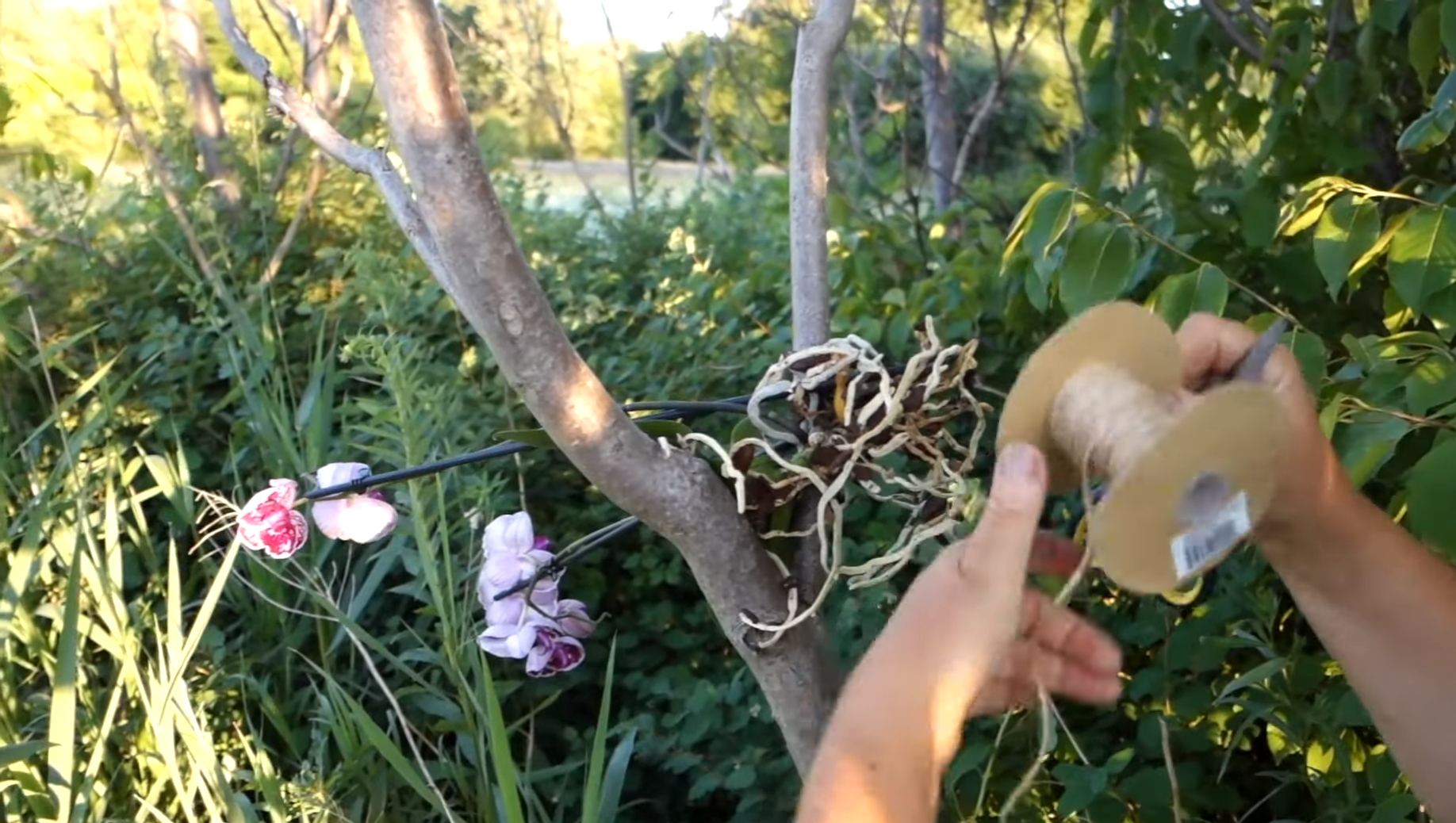
Soil and Substrate Preparation
Before planting, preparing the soil and substrate is an essential step. The choice of substrate largely depends on whether your orchids are epiphytic or terrestrial. Epiphytic orchids, commonly found growing on tree trunks in their natural environment, necessitate loose and well-draining substrates. These could include materials like bark chips, sphagnum moss, or a mix of both. The substrate must retain sufficient moisture to support the orchid, while also promoting rapid drainage to prevent root rot.
On the other hand, terrestrial orchids, which grow on the ground, prefer a more conventional potting mix. This could be a blend of peat moss, perlite, and compost, providing a balance of moisture retention and good drainage.
Remember to also consider the pH level of your substrate. Orchids prefer slightly acidic conditions, with a pH between 5.5 and 6.5. [4] This can be achieved by adding elements like pine bark or sphagnum peat moss, which naturally lower the pH level.
Preparation involves cleaning and sterilizing the growing medium to eliminate any potential pests or diseases. This can be done by baking the substrate in the oven for a couple of hours or pouring boiling water over it. Allow the substrate to cool completely before using it for planting your orchids.
Transplantation and Growing Technique
Transplanting your orchids and applying the correct growing techniques can significantly affect the success of your outdoor orchid garden.
Begin by delicately extracting your orchid from its present container. Gently untangle the roots and remove any dead or decaying material. To eliminate any residual potting mix, rinse the roots under lukewarm water.
Next, when preparing the substrate in a new pot or outdoor area, position the orchid in a way that places its oldest pseudobulbs at the pot’s edge and directs the newest growth towards the center.This arrangement gives the orchid room to grow. For epiphytic orchids, secure them to a tree or bark structure, ensuring that the roots are in contact with the substrate.
Once the orchid is in place, fill up the remaining area with your substrate, firming it gently around the roots. However, avoid compacting the substrate too much as this can prevent air circulation and water drainage.
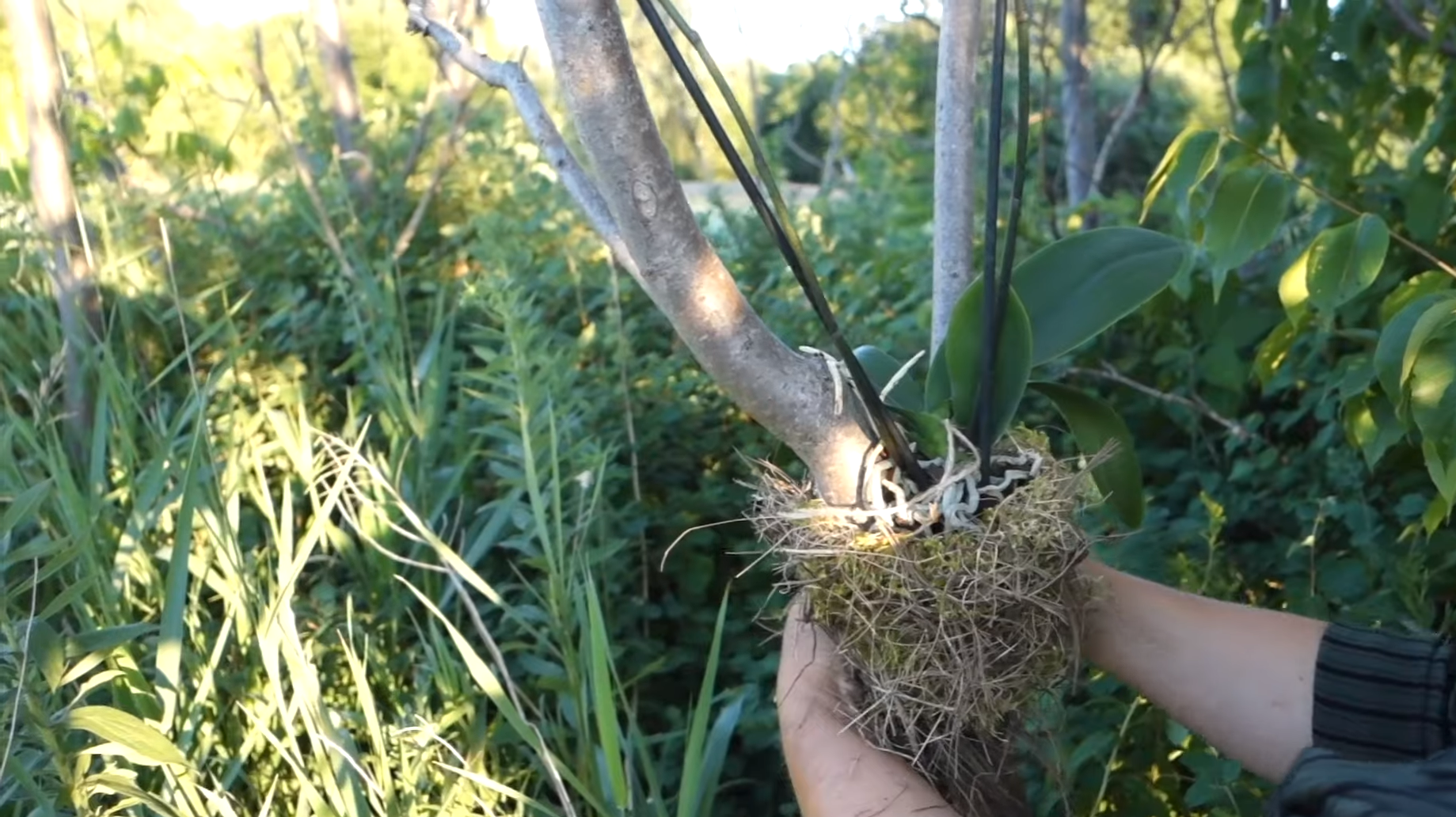
Watering and Mulching
Watering is a critical aspect of orchid care and should be tailored to the specific needs of the species in your garden. Most orchids prefer a cycle of thorough watering followed by a period of drying out. Overwatering can lead to root rot, a common issue that often leads to the death of the plant. An easy way to ascertain if your orchid needs watering is to feel the weight of the pot or the color of the roots. A light pot or silvery-grey roots are indicators that the orchid requires water.
Mulching serves as an excellent technique to conserve moisture, particularly for outdoor orchids exposed to harsh weather conditions. It acts as a protective layer, reducing water evaporation from the soil surface, and regulates the soil temperature. Organic mulches like bark chips, leaf mold, or compost also add valuable nutrients to the soil as they decompose over time. However, mulch should not be in direct contact with the orchid stems, as this can create a damp environment conducive to fungal and bacterial diseases.
Caring for Outdoor Orchids
To ensure your orchids thrive and bloom, regular care and maintenance are key. Monitor your orchids for signs of pests or diseases, such as discoloration, spots, or abnormal growth. Implementing a good pest management strategy, such as using organic insecticides or introducing beneficial insects, can support the overall health of your garden.
Orchids also benefit from regular feeding. A balanced orchid fertilizer, applied in accordance with package instructions, will provide the necessary nutrients for growth and blooming. However, be careful not to over-fertilize as this can cause root burn or excessive foliar growth at the expense of flowering.
Lastly, be mindful of seasonal changes. During colder months, you may need to provide additional protection for your orchids or even temporarily move them indoors if temperatures drop below the tolerance level of the species. By following these care guidelines, you can enjoy the beauty and exotic allure of outdoor orchids for years to come.
Decorative Ideas for Home and Garden
Orchids, with their exotic beauty and range of colors and sizes, present numerous decorative opportunities for both your home and garden.
In the garden, orchids can be used to create visually captivating vertical displays. Epiphytic orchids can be mounted on trees, walls, or specially designed orchid walls, creating a lush, vibrant backdrop. Ground-growing orchids can be mass planted to create colorful, textured flower beds or used as edging plants along garden paths.
Orchids can also add an exotic touch to bathroom decor. Their high humidity requirements make them well-suited to this space, and they can be strategically placed on vanity tops or wall shelves.
Remember, the beauty of decorating with orchids lies in their versatility. Be creative and try out different arrangements until you find the one that best suits your personal aesthetic and the specific needs of your orchids.
Frequently Asked Questions
Can I plant Orchids in the ground?
Yes, certain types of orchids can be planted in the ground, particularly terrestrial orchids like the Bletilla Striata (Hardy Ground Orchid) or Cymbidium orchids. These orchids are well-adapted to soil conditions unlike their epiphytic counterparts, which thrive on trees or in the air. However, the soil must be well-draining to prevent root rot, and it should be rich in organic matter. The specific growing conditions would largely depend upon the type of orchid and the climate of your area. Remember not to bury the crown of the orchid (where the leaves join together at the base), as this can cause the plant to rot.
Can Orchids survive outdoors?
Absolutely, many orchid species can survive and even thrive outdoors, provided they are given appropriate care and the right conditions. The key to successful outdoor orchid cultivation is understanding the needs of your specific orchid species and matching them to the conditions in your garden. Factors such as light, temperature, humidity, airflow, and watering needs should be considered. Some orchids, particularly those native to tropical regions, require warm, humid conditions and may not fare well in colder climates. However, there are also many hardier orchid varieties, such as Cymbidiums and certain Dendrobiums, that can withstand more temperate conditions.
Where should I put Orchids outside?
Orchids should be placed outside in a location that best suits their specific needs, which can vary greatly depending on the species. Most orchids require a spot with bright, indirect light. An east or west-facing location is often ideal as it provides plenty of light without the harsh midday sun that can scorch the leaves. Some hardier species can tolerate more sunlight, while others, particularly those native to forest understories, require more shade.Temperature is another important factor to consider. Choose a location where it will be easy for you to maintain the orchid’s watering schedule.
Do Orchids grow better inside or outside?
Orchids can thrive both indoors and outdoors, and the optimal choice often depends on the specific type of orchid and the local climate conditions. Some orchids, such as Phalaenopsis and Paphiopedilum, are more suited to indoor environments, where you can control the temperature, humidity, and light levels more easily. On the other hand, many Dendrobium and Cymbidium orchids can flourish outdoors, particularly in milder climates. It’s essential to understand the specific requirements of your particular orchid species and provide them with the necessary care, whether indoors or outdoors.
Useful Video: Where should I put orchids outside?
Conclusion
The popularity of orchids as a form of outdoor decoration has made them versatile additions to people’s landscaping ideas. Not only are they beautiful and alluring, but they can also be used to add texture and contrast to your landscape. While you may not want to plant orchids in a conventional garden setting, there is no reason why they cannot do well in outdoor containers. Just be sure that you are aware of the requirements for success: water, light, air circulation, and suitable temperature ranges must all be taken into account. With the right care and effort, you can bring these wonderful plants into your outdoor oasis with ease. Moreover, their unmistakable beauty will surely give any space an eye-pleasing charm!
References:
- http://www.bellaonline.com/articles/art33604.asp
- https://www.allaboutgardening.com/dracula-orchid/
- https://plnts.com/en/care/houseplants-family/jewel-orchid
- https://bestslimmingworld.com/how-and-why-watering-orchids-with-lemon-juice/






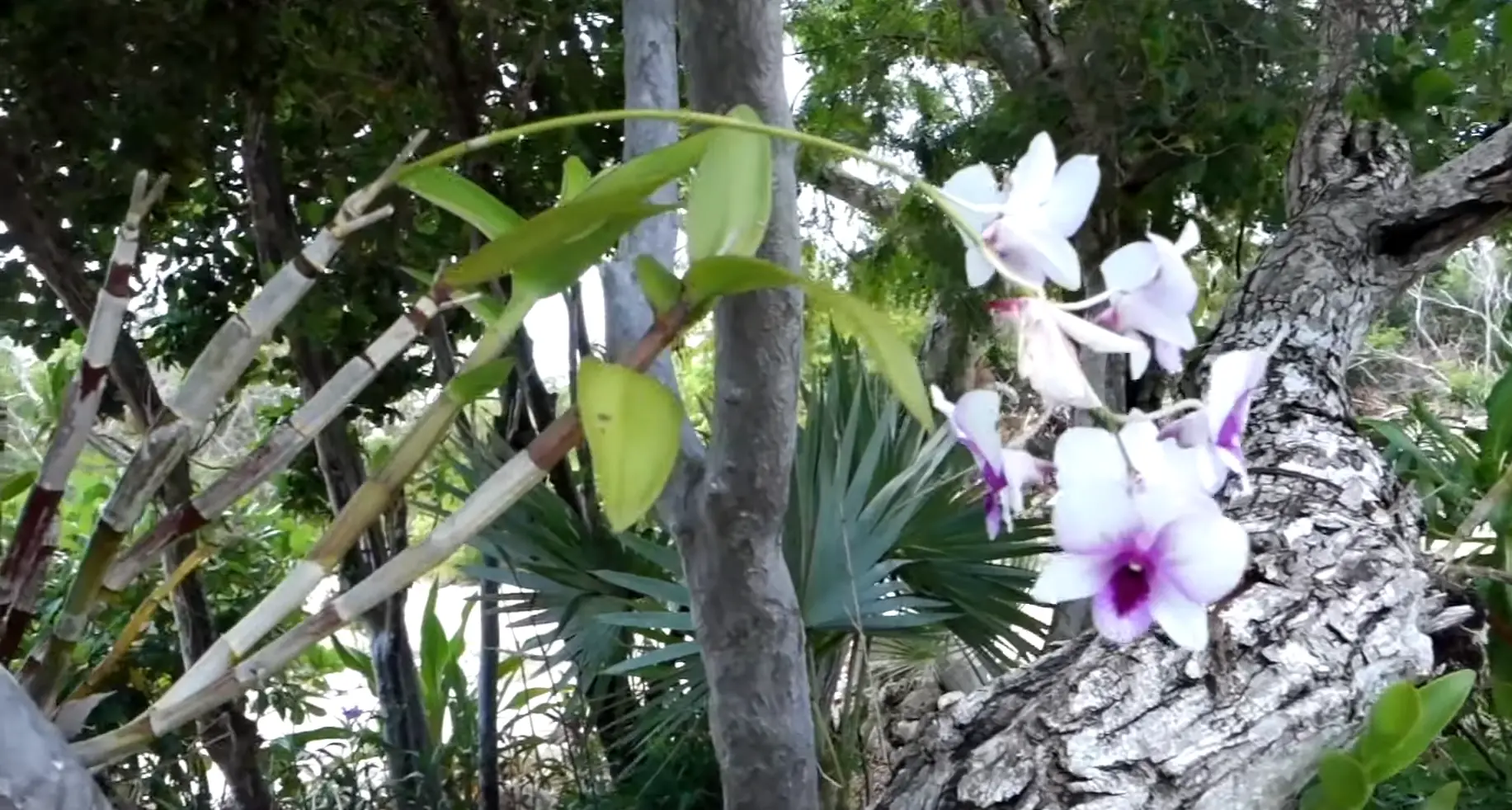
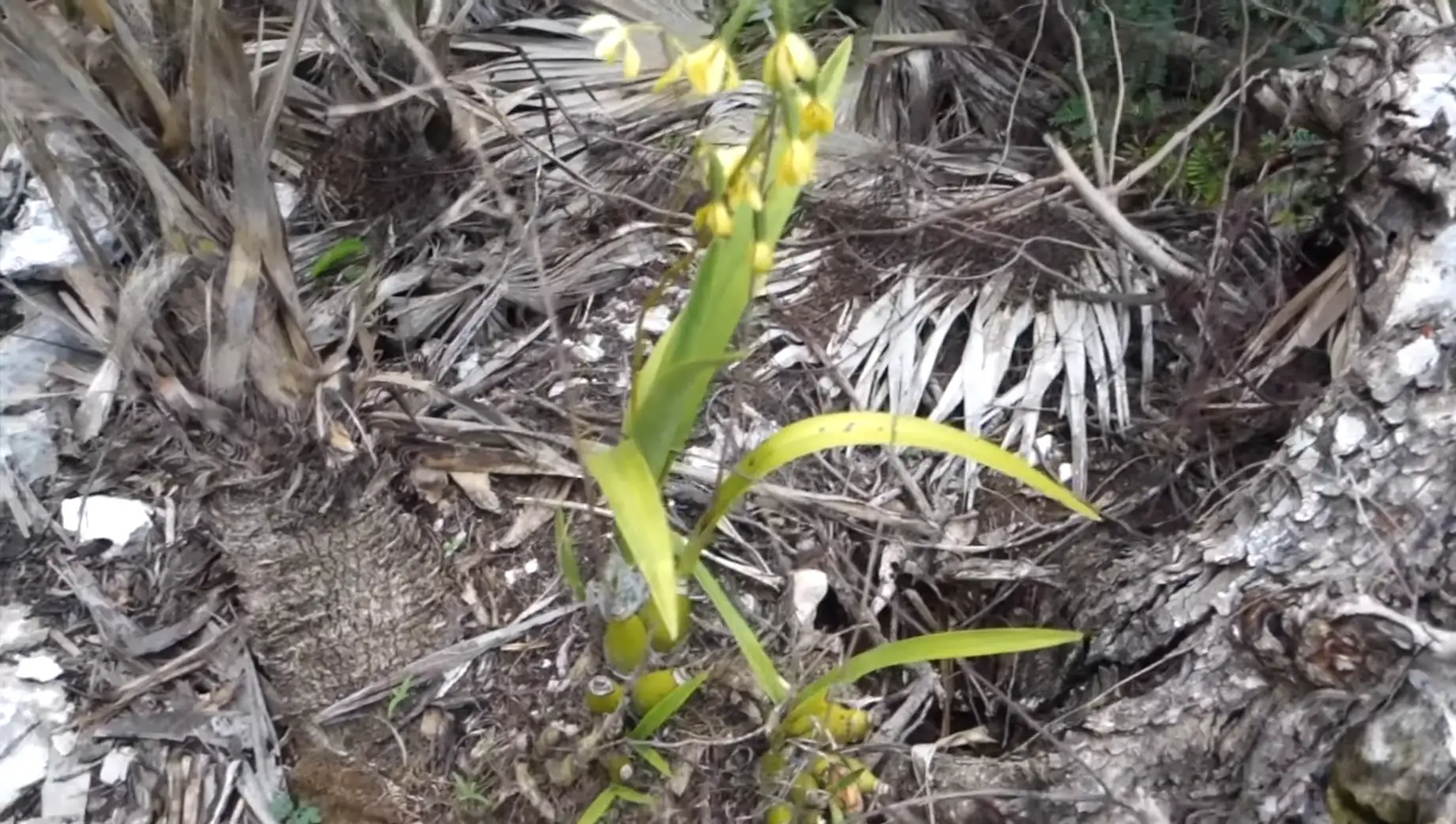





Leave a Reply
View Comments